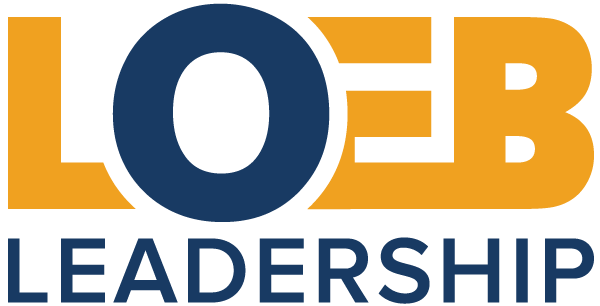Building a Culture of Continuous Improvement
Creating a culture of continuous improvement is vital for long-term growth and adaptability. This approach emphasizes a consistent commitment to enhancing products, services, and processes, embedding a mindset of progress and innovation within the organization. Unlike one-time changes, continuous improvement thrives through ongoing contributions from all team members, ensuring a steady trajectory toward excellence.
Leadership Commitment
The journey toward continuous improvement begins with leadership. Leaders set the standard by modeling change, demonstrating transparency, and embodying the behaviors they wish to see throughout the organization. Their commitment involves clearly articulating the vision for improvement and aligning resources to facilitate it. This proactive approach fosters trust and motivates employees, who feel supported and encouraged to contribute their ideas. Leaders who prioritize continuous improvement create an environment where employees are inspired to engage and innovate.
Effective leaders also take the time to communicate the value of continuous improvement. By showing that they are invested in change and growth, they set the stage for a culture where suggestions and feedback are welcome. This commitment must go beyond rhetoric; leaders need to participate in improvement initiatives and show that they are invested in the same efforts they ask of their teams.
Empowering Employees
Employees are central to a culture of continuous improvement. Empowering team members to share insights, suggest changes, and engage in problem-solving helps create an atmosphere where ownership and accountability are encouraged. Employees who feel they have a voice are more engaged and motivated, leading to higher productivity and a stronger connection to the organization’s mission.
To empower employees effectively, organizations need to provide structured opportunities for participation. Establishing open channels for sharing ideas—such as feedback meetings, digital suggestion platforms, or innovation workshops—encourages employees to contribute. Creating an environment where experimentation is encouraged and failure is seen as a learning opportunity ensures that team members feel confident in proposing and testing new ideas. Recognition of both small and significant contributions reinforces the value of employee participation and motivates continued effort.
Collaboration Across Teams
A culture of continuous improvement benefits from robust collaboration. Cross-functional teamwork encourages the sharing of diverse perspectives, leading to innovative solutions and comprehensive changes. When departments work together on improvement initiatives, they can identify inefficiencies, brainstorm creative approaches, and implement changes more effectively.
Organizations can promote collaboration by setting up joint projects or task forces that bring together team members from various departments to tackle shared challenges. Regular meetings and brainstorming sessions foster a sense of unity and mutual respect, while data-driven discussions enhance the credibility and precision of proposed solutions. Data analysis can inform decisions and provide measurable insights into what changes are working and where further adjustments may be needed. This collaborative, evidence-based approach ensures that continuous improvement efforts are impactful and relevant.
Fostering a Learning Environment
Continuous improvement thrives in a culture that prioritizes learning and development. Organizations that invest in upskilling their workforce through training, workshops, and mentoring programs create an environment where employees feel equipped and prepared to contribute to ongoing progress. These learning opportunities help employees stay adaptable and resilient, which is essential in the face of changing business landscapes and evolving challenges.
Encouraging knowledge sharing among team members is also vital. When employees who have acquired new skills or insights share what they have learned with their peers, it strengthens the collective expertise of the organization. This practice of knowledge sharing can be facilitated through internal presentations, peer-led workshops, or resource-sharing platforms, fostering an internal network of continuous education.
Leveraging Technology for Improvement
Technology plays an essential role in enabling and supporting a culture of continuous improvement. Tools such as project management software, data analytics platforms, and communication applications streamline processes and foster seamless collaboration. By integrating these technologies, organizations can facilitate better workflow management and more effective communication among teams.
Automation of routine tasks can also play a crucial role in freeing up employees' time, allowing them to focus on more strategic and value-added activities. This not only improves efficiency but also encourages employees to take on higher-level challenges that contribute to the organization’s growth. Data analytics tools can help teams monitor the impact of their improvement initiatives, offering insights that inform decision-making and drive further innovation.
Sustaining a Culture of Continuous Improvement
Sustaining a culture of continuous improvement requires an ongoing commitment across all levels of the organization. Leaders must consistently reinforce the importance of continuous improvement through their actions, ensuring it becomes an ingrained part of the organizational values. Regular feedback mechanisms allow employees to share their experiences, insights, and suggestions, creating a feedback loop that keeps initiatives aligned with the organization’s goals.
Adaptability is key to maintaining momentum. Organizations should be prepared to evolve their approach to continuous improvement as new challenges arise and market conditions change. By staying flexible and open to adjustments, organizations can ensure that their improvement efforts remain effective and relevant over time.
A Foundation for Long-Term Success
Building a culture of continuous improvement is a multifaceted endeavor that requires dedication from leaders and active participation from employees. By fostering an environment that values learning, encourages collaboration, and leverages technology, organizations can embed continuous improvement into their daily operations. This commitment to progress drives innovation, enhances efficiency, and empowers teams to contribute meaningfully to the organization’s success. With sustained effort and a focus on growth, continuous improvement becomes more than just a practice—it becomes a core aspect of the organization's identity and a foundation for long-term success.
Loeb Leadership’s comprehensive services, including executive coaching, leadership training, and organizational consulting, are designed to support organizations in building a culture of continuous improvement. By partnering with Loeb Leadership, organizations gain access to tailored programs that foster strong leadership, encourage collaboration, and enhance strategic thinking. Our approach equips leaders and teams with the skills and confidence to drive meaningful, ongoing progress. Let Loeb Leadership guide your organization in embedding continuous improvement as a core value, leading to sustained innovation, increased efficiency, and long-term success. Contact our team today.
